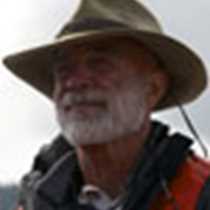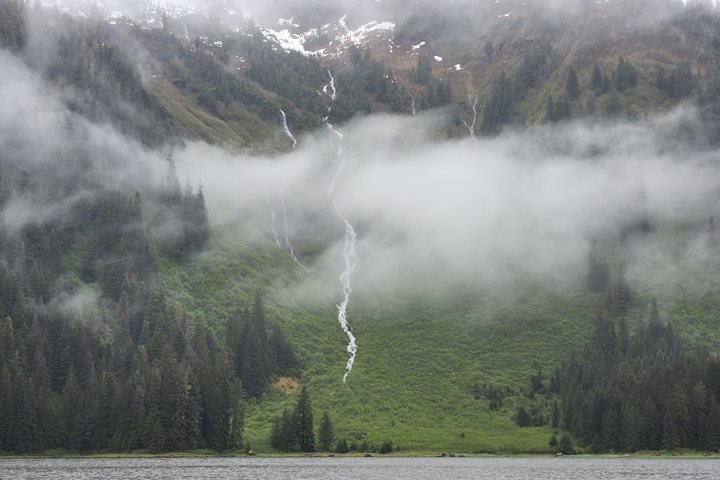Morning found the National Geographic Sea Lion docked under low clouds at Bartlett Cove near the entrance of Glacier Bay. There we picked up our two guests for the day, National Park Ranger Patrick Hair and Alaska Native Voices Interpreter Bertha Franulovich, before beginning our voyage into the park.
Our first stop was at South Marble Island. Countless cacophonous Steller sea lions covered the sheer edges of the islands, eternally bickering and growling. Hundreds of birds nest along on the steep cliffs, utilizing the small clefts and pockets of vegetation. Black-legged kittiwakes, glaucous-winged gulls, common murres, and pelagic cormorants filled the air and water, but the show was stolen by tufted puffins with their bright beaks and dual yellow mohawks.
Ranger Patrick narrated the natural history of the area and Bertha imparted the cultural significance of the park. We cruised along the edges of mountains, their tops veiled in drifting mists. Evidence of past glaciers began to emerge in the deep smooth hollow of the valleys, and long striations gouged into cliff faces. Mountain goats rested on grassy ledges along huge outcroppings of scoured granite. After passing through the narrow cut along Russell Island, the namesake of the bay came into view. Glaciers could be seen to the north and west, frozen cascades of ice descending down from the mountains. The windows of the dining room were filled by the 250 foot face of Margerie glacier as we ate our lunch. Scale was hard to comprehend but the delay between the splash and the resounding booms revealed the distance we sat from the face.
It is incredible to imagine the large expanse of Glacier Bay completely covered by ice. Trying to envision over 2,000 feet of ice above and below you is as challenging as it is humbling. Vancouver never saw the gorgeous valleys and mountains in 1794; he only saw the vast wall of ice and the maze of icebergs born from its face. A hundred years and 45 miles of retreat exposed the bay and its beauty to John Muir. Today we can cruise a further 20 miles up Tarr Inlet, but the majesty and immensity of this place is just as surreal as when first documented.










